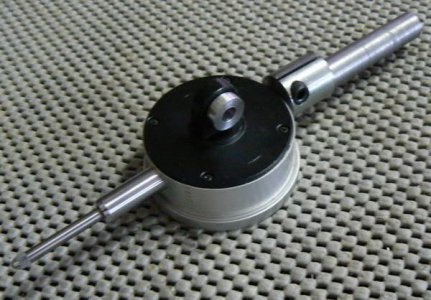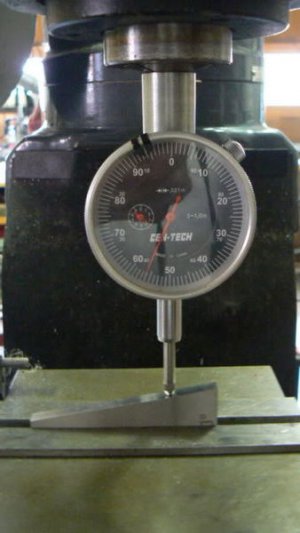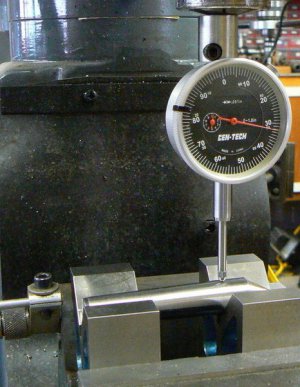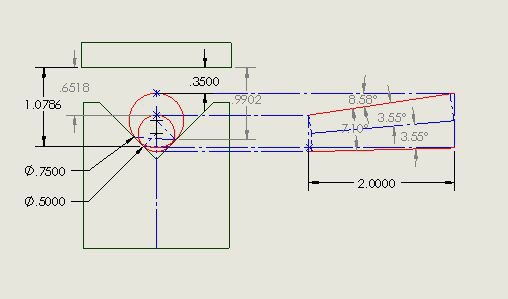- Joined
- Feb 5, 2015
- Messages
- 662
I'm re-posting a quick suggestion that I made on another forum regarding measuring taper angles.
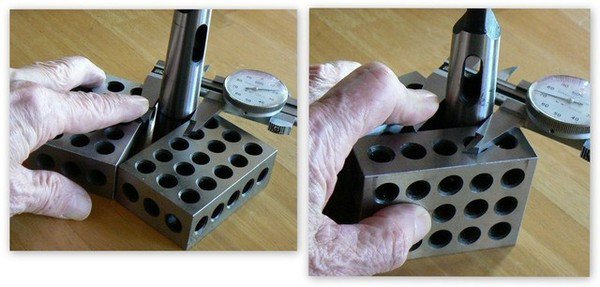
Simple way to measure small tapers. Place the taper between 1-2-3 blocks and measure diameter across the 1 inch surfaces with calipers, making sure that the calipers are flat against the blocks. Repeat measurement across 2 inch surfaces. Subtract the smallest diameter from the largest and divide the result by two. The angle of ONE side of the taper is the arc-tangent of this number. (Do this on a surface plate, not the kitchen table, LOL).
Example: The measured diameter with calipers resting on 1 inch surface is .745. Measured diameter with calipers on 2 inch surface is .620.
(.745 - .620) / 2 = .0625 and arc-tangent(.0625) = 3.5763 degrees or 3 deg 34 min 35 sec
For the included angle of the taper, double this result.
You can also use the 1 inch and 3 inch surfaces of the 1-2-3 blocks to gain a bit more accuracy. If you do this, however divide the difference between the diameters by "4" instead of "2".

Simple way to measure small tapers. Place the taper between 1-2-3 blocks and measure diameter across the 1 inch surfaces with calipers, making sure that the calipers are flat against the blocks. Repeat measurement across 2 inch surfaces. Subtract the smallest diameter from the largest and divide the result by two. The angle of ONE side of the taper is the arc-tangent of this number. (Do this on a surface plate, not the kitchen table, LOL).
Example: The measured diameter with calipers resting on 1 inch surface is .745. Measured diameter with calipers on 2 inch surface is .620.
(.745 - .620) / 2 = .0625 and arc-tangent(.0625) = 3.5763 degrees or 3 deg 34 min 35 sec
For the included angle of the taper, double this result.
You can also use the 1 inch and 3 inch surfaces of the 1-2-3 blocks to gain a bit more accuracy. If you do this, however divide the difference between the diameters by "4" instead of "2".

